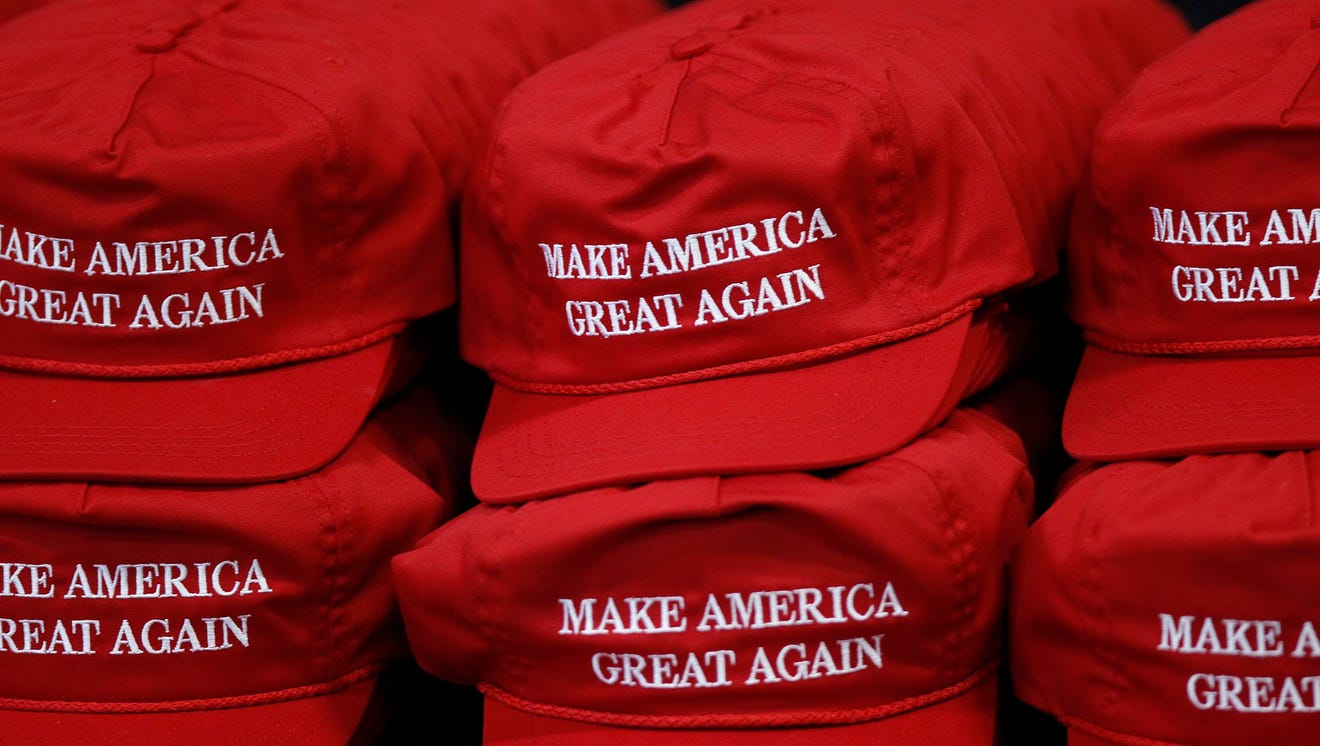Are Trump's Promised Factory Jobs Coming Back To America?

Table of Contents
The Campaign Promise and its Underlying Economic Arguments
Trump's campaign rhetoric frequently centered on the idea of bringing back American factory jobs lost to overseas competition. He blamed unfair trade deals, particularly NAFTA (North American Free Trade Agreement), for the decline of American manufacturing and the outsourcing of jobs. His proposed solution involved renegotiating these trade deals, imposing tariffs on imported goods, and encouraging companies to "reshoring" their manufacturing operations back to the US.
The economic theories underpinning this promise revolved around reducing trade deficits and boosting domestic production. By imposing tariffs, Trump aimed to make imported goods more expensive, thus increasing the demand for domestically produced alternatives. Renegotiating trade agreements, like the replacement of NAFTA with USMCA (United States-Mexico-Canada Agreement), was intended to create a more favorable environment for American businesses.
- Specific examples of Trump's statements: Trump repeatedly promised to bring back "millions" of manufacturing jobs. His speeches and tweets often highlighted the supposed benefits of his protectionist trade policies.
- Analysis of the proposed mechanisms: The core mechanism was to increase the cost of imports, making American-made goods more competitive. This was to be achieved through tariffs and renegotiated trade deals.
- Initial economic predictions: Some supporters predicted a significant surge in manufacturing employment as a direct result of Trump's policies.
Analyzing the Data: Job Growth in the Manufacturing Sector Under Trump
Analyzing the data requires a nuanced approach. While the manufacturing sector did see some job growth during Trump's presidency, it's crucial to consider this within the broader context of long-term trends and other contributing factors. The Bureau of Labor Statistics (BLS) provides the official data on employment in the manufacturing sector.
Comparing job growth under Trump to previous administrations reveals a mixed picture. While there was some growth, it wasn't at a dramatically different pace than under previous presidents. Furthermore, focusing solely on the raw number of jobs overlooks crucial aspects like the quality of jobs created (wages, benefits) and the impact of automation.
- Specific employment data from reliable sources (e.g., Bureau of Labor Statistics): The BLS data should be consulted for precise figures on manufacturing employment during and before Trump’s presidency.
- Charts and graphs visualizing job growth: Visual representations of job growth data offer a clearer understanding of the trends.
- Discussion of the limitations: Simply counting jobs isn't enough. The type of jobs, wages, and benefits associated with them are equally critical considerations.
The Impact of Trade Policies on American Manufacturing
Trump's trade policies, characterized by tariffs and trade wars, had a complex and often contradictory impact on American manufacturing. While some sectors benefited from increased domestic demand due to tariffs on imports, others faced significant challenges due to retaliatory tariffs from other countries. The impact varied significantly across industries.
- Examples of industries positively and negatively impacted: Certain industries, like steel, experienced a temporary boost. However, others, heavily reliant on exports, suffered due to retaliatory tariffs.
- Analysis of the impact of tariffs on consumer prices: Tariffs increased the cost of imported goods, leading to higher prices for consumers.
- Discussion of the relocation of manufacturing operations: Some companies, facing higher costs in the US, relocated manufacturing to other countries to avoid tariffs.
Automation and the Future of American Factory Jobs
The decline of factory jobs is not solely attributable to trade policies. Automation and technological advancements have played, and continue to play, a significant role. Robots, AI, and other automation technologies have increased productivity but also displaced workers in many manufacturing settings.
This technological shift necessitates a focus on retraining and upskilling the workforce to adapt to the changing demands of the modern manufacturing sector. Investing in education and training programs is crucial to equip workers with the skills needed for the jobs of the future.
- Examples of automation technologies: Robotics, AI-powered systems, and advanced manufacturing processes are rapidly changing the landscape.
- Discussion of retraining and upskilling initiatives: Government and private sector programs are essential to support workers transitioning to new roles.
- Analysis of the long-term implications: The long-term impact of automation on the manufacturing sector requires careful consideration and proactive adaptation.
Conclusion
The return of factory jobs to America under Trump's administration presents a complex picture. While some job growth occurred in the manufacturing sector, it's difficult to definitively attribute this solely to his policies. Factors like automation and global economic trends played significant roles. Trump's trade policies, while aiming to boost domestic manufacturing, also had negative consequences for some industries and consumers.
To understand the future of American manufacturing, we must consider the interplay of various factors, including trade policy, technological advancements, and workforce development. Further research is needed to fully assess the long-term effects of these intertwined forces on the American manufacturing sector and the employment landscape. Engage in informed discussions about the future of American manufacturing jobs and the impact of government policies. Continue to research the complex relationship between American manufacturing, factory job growth, reshoring initiatives, and economic policy to form your own informed opinion on Trump's legacy in this arena.

Featured Posts
-
 Kamerbrief Verkoopprogramma Certificaten Abn Amro Een Complete Gids
May 21, 2025
Kamerbrief Verkoopprogramma Certificaten Abn Amro Een Complete Gids
May 21, 2025 -
 Manchester Uniteds Rashford Bags Brace Cruises Past Aston Villa In Fa Cup
May 21, 2025
Manchester Uniteds Rashford Bags Brace Cruises Past Aston Villa In Fa Cup
May 21, 2025 -
 The Goldbergs Behind The Scenes Facts And Trivia You Didnt Know
May 21, 2025
The Goldbergs Behind The Scenes Facts And Trivia You Didnt Know
May 21, 2025 -
 Trans Australia Run A Record Breaking Attempt
May 21, 2025
Trans Australia Run A Record Breaking Attempt
May 21, 2025 -
 Climate Change And Home Mortgages Protecting Your Credit Score
May 21, 2025
Climate Change And Home Mortgages Protecting Your Credit Score
May 21, 2025
